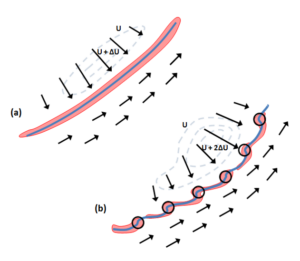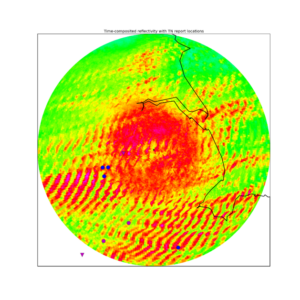Localized hazardous weather events within extratropical cyclones
This project seeks to improve our knowledge of the processes leading to localised severe weather in cool-season, maritime environments over the UK, especially where embedded in extratropical cyclones. The research will bring together novel observations and current high-resolution modelling capabilities. There will be opportunity to work with datasets from previous field campaigns, such as DIAMET, and for involvement in the UK Testbed program in which researchers in the university will work directly with Met Office researchers and forecasters to generate and evaluate real-time forecasts. A particular emphasis will be placed on understanding the dynamics, morphology and evolution of the smaller-scale features responsible for the highest-impact events in cyclonic storms over the UK. The results will also inform our understanding of future UK climate change in regard to these high-impact events.
Recent advances in observations and numerical modelling capability have paved the way for increasingly detailed study of small-scale severe weather events across the globe. Research efforts have often concentrated on severe convection in warm season, continental climates (for example, supercell thunderstorms in the US Great Plains). This understanding has led to effective “nowcasting” strategies. Nowcasting involves using a combination of real-time observations and model data to provide near-real-time alerts and predictions of high-impact weather, for example, alerts of life-threatening events such as tornadoes.
However, localised severe weather events, including damaging winds, flash flooding, and tornadoes, also occur maritime environments and outside of the warm season. Such events often occur within extratropical cyclones, where they are associated with spatiotemporal scales much smaller than that of the parent cyclone itself. These events account for a substantial fraction of all severe weather events in UK. Operational meteorologists at the Met Office have expressed a need for better understanding of these events, and for the development of nowcasting strategies and tools tailored specifically to them.
The candidate will have some flexibility in determining the exact direction and focus of the study in discussion with the Met Office CASE project partner, but questions to be addressed will include:
- Severe weather events associated with secondary cyclogenesis (i.e. frontal waves): what controls the morphology and evolution of a frontal wave and how does this influence the potential for severe weather? Do particular types of frontal wave bring a higher risk of severe weather and can these be anticipated?
- Processes leading to the development and/or intensification of narrow cold-frontal rainbands, and the relative importance of dynamic processes (e.g. frontogenesis) and convective processes in frontal rainband formation, maintenance, morphology and severe weather potential.
- Severe weather potential as related to the parent cyclone structure and cyclone lifecycle stage, and the dependency of these factors on the large-scale setting of the cyclone.
- Mechanisms leading to meso-beta-scale (~20 – 200 km) damaging wind events in frontal waves, such as the ‘Halloween’ windstorm of 31 October 2021 in England
- Characteristics, organisation, and hazards associated with convection in cool-season polar maritime / returning polar maritime airmasses
- Structure and evolution of fronts as related to the potential for localised severe weather.
- Future climate change in these severe weather systems.


The results of the research will provide insights into the approaches that are likely to be most suitable for the nowcasting of cool-season, localised severe weather events in the UK (and other maritime locations). The research will therefore contribute to current and future efforts in the Met Office to improve the nowcasting and warning of small-scale severe weather events. The results will also improve our ability to understand likely climate changes in UK severe weather, by explaining the dynamics of small-scale severe weather events which are not well captured by global climate models.
The project has emerged from a successful partnership between the University and the Met Office lasting several years. The Met Office co-supervisor, Matt Clark, is a Visiting Scientist at the University, and the student will be expected to undertake regular research visits to the Met Office in Exeter.
